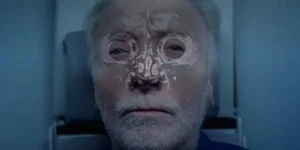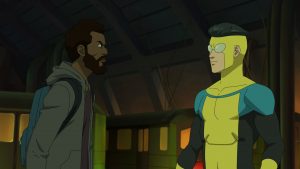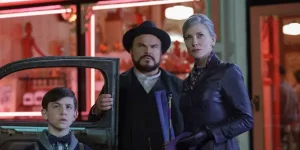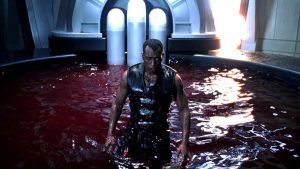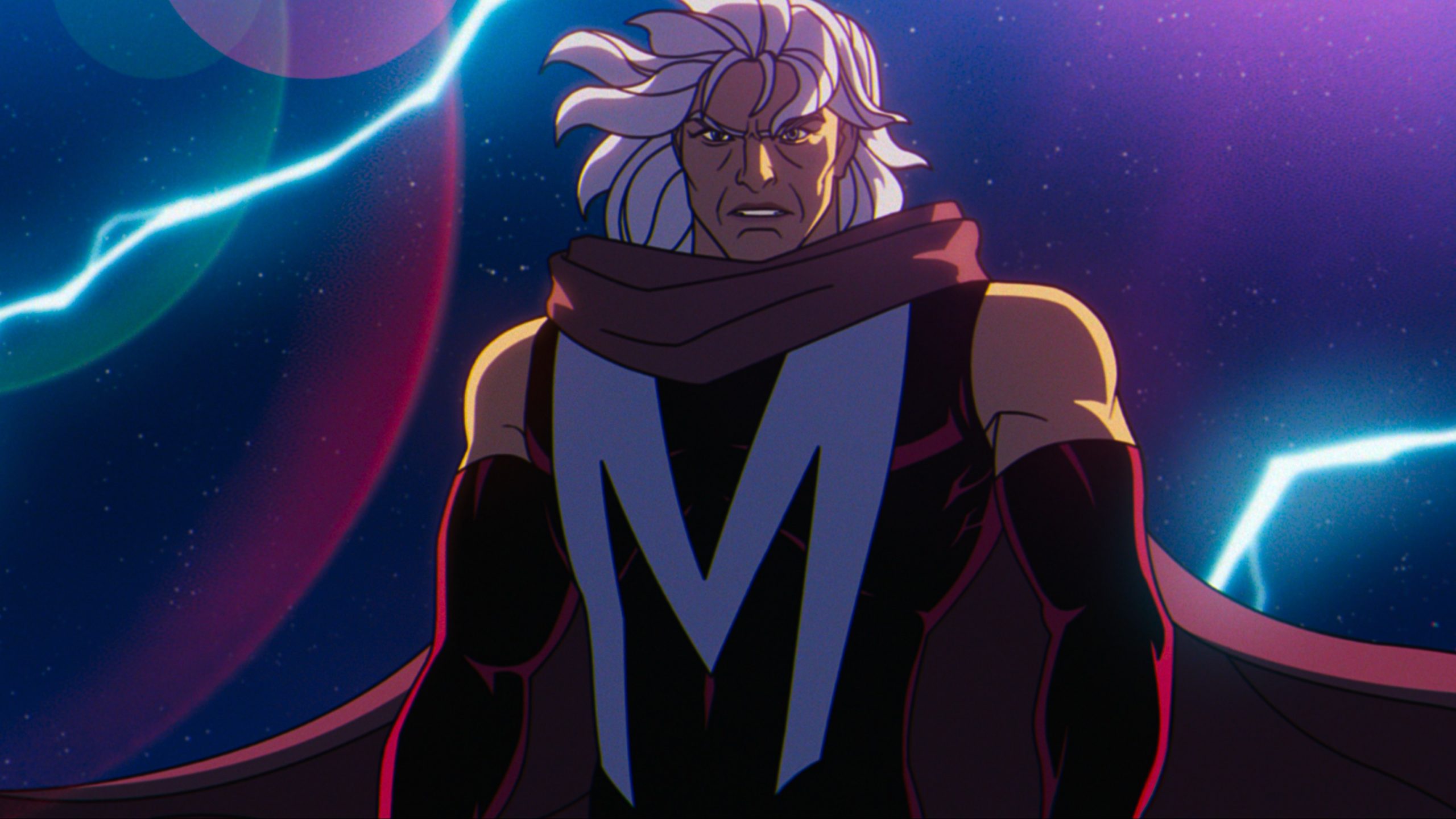
This X-Men ’97 article contains spoilers.
Life has never been easy for the X-Men, or any mutant in the Marvel Universe. They’re feared and hated, oppressed just for being alive. They’re turned betrayed time and again, even by heroes who call themselves their friends.
But in the history of the X-Men, there are three stories that stand out as particularly heartbreaking: Mutant Massacre, E is for Extinction, and Fall of X. And the latest episode of X-Men ’97 just combined them all into one shocking half-hour full of deaths.
“Remember It” begins as a love letter to all things X-Men, as Magneto, Rogue, and Gambit head to the island nation of Genosha. Once the home of an oppressive human regime (modeled in the original comics after Apartheid South Africa), Genosha has become a home for mutants, a sovereign nation under mutant rule. Director Emi Yonemura and series creator Beau De Mayo fill the screen with X-Men easter eggs, giving us glimpses of everyone from Dazzler to fan favorite Glob Herman to even Sammy the Squid-Boy, the one redeeming part of writer Chuck Austin’s legendarily bad run on Uncanny X-Men.
But by the end, Genosha is in flames, the X-Men are enraged while a news camera crew watches, and too many mutants lie dead, including Magneto and Gambit. Such a shocking turn of events can only come from a story that draws from the worst days in the lives of Marvel’s (Now Not-So) Merry Mutants.
Mutant Massacre
“Remember It” stands out not only for its audacious storytelling and fantastic animation, but also for making Gambit cool, something some longtime fans (including this author!) could never admit. Gambit sacrifices himself at the end of the episode, while taking the Master Mold with him, using his powers to charge the gigantic Sentinel maker and blow it up. Longtime X-Men fans cannot help but catch the bit of irony in Gambit’s death, which comes after Master Mold killed Magneto and several Morlocks.
In 1983’s Uncanny X-Men #169, written by Chris Claremont and penciled by Paul Smith, the X-Men meet the Morlocks, a group of mutants who cannot blend into human society. The Morlocks instead live in the sewers, under the leadership of the one-eyed punk lady Callisto. Despite the initial clash between the Morlocks and the X-Men, which saw the former kidnap Kitty Pryde and the latter depose Callisto in a one-on-one duel with Storm, the two became intertwined.
So when a new group of villains calling themselves the Marauders arrived the sewers in 1986’s Uncanny X-Men #210 and slaughtered hundreds of Morlocks, the X-Men got involved. In fact, more than the X-Men arrived, as Mutant Massacre constituted one of the first X-Book crossovers, something that became an annual tradition after the story’s success.
Mutant Massacre involved the mainline team in Uncanny X-Men, the teen students at Xavier’s school in The New Mutants, and the original five X-Men now masquerading as humans who hunt mutants in X-Factor. Longtime X-Men editor and X-Factor writer Louise Simonson worked an issue of her series Power Pack into the story too, and her husband Walter devoted two issues of his landmark Thor run to Mutant Massacre, which sounds random but was actually awesome.
At the time, Mutant Massacre dramatically raised the stakes for X-Men stories. It showed just how vulnerable mutants were, and how even fellow mutants took pleasure in killing the weakest among them.
Over the years, writers built on the event to make it even more significant in X-Men lore. First, the Maurauders were revealed to be working for Mister Sinister, as part of his plans to control the Summers line. Much later, we learn that Sinister employed Gambit to help set up the Massacre, using him to lead the Marauders to their prey.
The X-Men ’97 version of the story features a lot of heartbreak and bloodshed, but it spares Gambit this dishonorable fate, allowing him to instead die a hero.
E is For Extinction
As in X-Men ’97, Genosha does indeed become a mutant paradise. During the 1990 crossover event X-Tinction Agenda, the X-Men and their allies overthrow Genosha’s repressive government and liberate the mutants on the island.
However, the extreme violence that Magneto witnessed caused him to abandon the heroic journey he had been on since 1985’s Uncanny X-Men #200 and turn heel again. Recommitted to mutant domination, Magneto gathers a new team of followers called the Acolytes and clashes with the X-Men time and again, including over the fate of Genosha. However, in the 1999 miniseries Magneto Rex, written by Joe Pruett and penciled by Brandon Peterson, the United Nations gives up all human claim to Genosha and allows Magneto to become its ruler.
His reign does not last long. Writer Grant Morrison, working with their longtime collaborator Frank Quitely, initiated their boundary pushing run with the arc E is for Extinction. In 2001’s New X-Men #114-116, Morrison and Quitely send a legion of Sentinels to destroy Genosha and slaughter legions of mutants, including Magneto himself. The attack intensifies tensions between humanity and the rest of the mutant population, which has only exacerbated as mutants become a pop culture cause célèbre among the youth.
The mastermind behind the plan? Cassandra Nova, Charles Xavier’s equally powerful and equally bald, but much more of a jerk, twin sister. Xavier tried to kill Cassandra when they were both in the womb, but she survived, eventually living to take over her brother’s body.
E is for Extinction sets the tone of Morrison’s run, not only prompting Magneto’s eventual (and very unlikely) return under the guise of the new X-Men recruit Xorn, but also his rise to pop culture icon, a revolutionary who becomes a hero among mutant teens. Moreover, it sets the path for Cyclops to abandon his Boy Scout attitude and become a revolutionary leader throughout the 2010s, something that’s also hinted at in the latest X-Men ’97 episode.
Fall of X
The depiction of mutant-controlled Genosha in X-Men ’97 also owes a lot to the most recent era of X-Men comics, in which all the mutants live together on the sovereign nation of Krakoa. There, the mutants are free to develop their own culture (which includes Cyclops, Wolverine, and Jean Grey living happily as a throuple, much to the chagrin of some readers) and their own religion (or, at least, that’s what Nightcrawler set out to do).
The Krakoa era began in 2019 with twin event series written by Jonathan Hickman, House of X and Powers of X, which revealed Moira MacTaggert as a mutant who helped convince Charles to take the unprecedented step of forming Krakoa alongside Magneto. Moira’s ability to relive her life every time she died allowed her to show Charles that his dream of peaceful coexistence with mutants and humans could come only if the former had their own sovereign nation.
Of course, humanity did not agree. Attacks on Krakoa came often and from all sides, but none as consistently as those from Orchis, a spin-off of evil super science group AIM devoted to defending humanity by eradicating mutants.
The greatest Orchis attack came in last year’s one-shot X-Men: Hellfire Gala 2023, written by Gerry Duggan and penciled by various artists. Choosing to attack when most mutants are gathered for the annual gala, Orchis launches its greatest weapon, including the robotic mutant hunter Nimrod and several agents (including M.O.D.O.K.). As Orchis slaughters the mutants, a secret conspirator reveals himself: Mister Sinister. Not only has Sinister paved the way for the fall of Krakoa, but he has tampered with the resurrection protocols that allow mutants to escape death. As a result, the hundreds of mutants who die during the Fall of X crossover are dead for good.
That the massacre in “Remember It” takes place around the Hellfire Gala is a clear nod to the latest mutant tragedy in the comics.
The Rise of X-Men ’97
The current X-Men comics are still dealing with Fall of X, leading to the big relaunch coming this summer called From the Ashes. But by combining the three events together, the show reminds viewers that while it owes a debt to the comics, X-Men ’97 is its own thing and will follow its own storylines.
That said, looking at these past comics stories can give us an idea of what’s to come in the second half of X-Men ’97‘s first season. The fact that Mister Sinister has already made his presence known on X-Men ’97 could mean he was also involved in the massacre on Genosha, considering his role in both Mutant Massacre and Fall of X. But with Cassandra Nova slated to be the big bad in this year’s Deadpool & Wolverine, and the MCU’s debt to X-Men: The Animated Series, it wouldn’t be surprising to see Xavier’s evil twin show up in the next few episodes to reveal she’s been pulling the strings of the latest X-Men tragedy all along.
More importantly, the combination of all these events allows “Remember It” to efficiently underscore the stakes of the X-Men concept. If left in peace, mutants could bring prosperity for not just themselves but the entire world. However, humanity cannot accept that and will stop at nothing to destroy the mutant population, harming themselves in the process. It’s that central tension that has made all X-Men stories, including X-Men ’97, so potent for all these years.
X-Men ’97 is streaming now on Disney+.
The post X-Men ’97’s Big Episode 5 Deaths Combine All the Most Tragic X-Men Stories Ever appeared first on Den of Geek.
